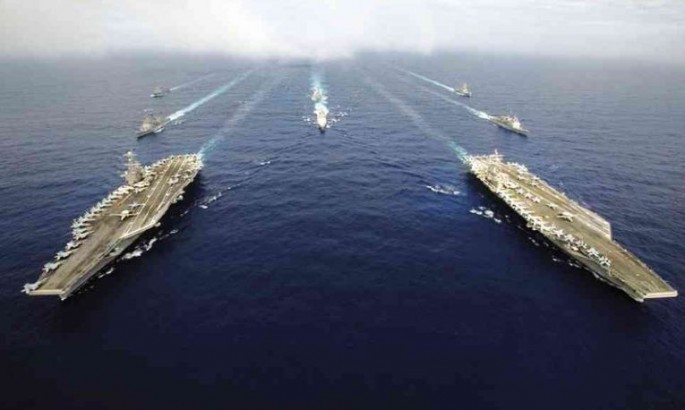Japan has warned that China risks war with its neighboring Asian countries --including Japan -- if China persists in its coercive diplomacy and ignoring an international tribunal's decision invalidating its claim to own the South China Sea.
China has no allies among its Asian maritime neighbors. On the other hand, Japan can count on the military support of the United States, the Philippines, Vietnam and Australia.
India can also be seen as among Japan's allies following New Delhi's sharp warning China should abide by the ruling of the Permanent Court of Arbitration that nullified all of China's claims to own the South China Sea.
In a defense white paper, Japan said China "continues to act in an assertive manner" and its actions "include dangerous acts that could cause unintended consequences."
Japan again urged China to abide by the ruling of the arbitration tribunal, which unilaterally declared null and void China's "nine-dash line." It expressed concern over increased China's activity in the East China Sea. China is contesting Japan's historic ownership of the uninhabited Senkakus islets.
"Recently, China has been intensifying activities near the Senkaku Islands, such as its military aircraft flying southward closer to the islands," said the white paper.
Until last March, jets of the Japan Air Self-Defense Force flew 571 missions against Chinese planes flying near Japanese airspace, an increase of 107 incidents from the previous year.
The white paper warned the world that China seeks to enforce its unilateral but illegal demands "without compromise," including efforts "to turn these coercive changes to the status quo into a fait accompli."
China responded to Japan's scathing white paper with a statement from Defense Minister Chang Wanquan urging China brace itself for a "people's war at sea" to counter threats from its huge number of enemies in Asia and the world.
The presence of two U.S. Navy carrier strike groups patrolling the South China Sea has deterred China from taking any military action against the Philippines following the July 12 decision by the arbitration tribunal.
The battle groups are built around the USS John C. Stennis from the U.S. Navy Third Fleet and the USS Ronald Reagan from the U.S. Navy Seventh Fleet. Units of the U.S. Navy Third Fleet responsible for protecting the West Coast of the United States were recently deployed to Asia.
Together, the U.S. Navy fleet patrolling off the Philippines consists of these two nuclear-powered aircraft carriers; two guided-missile cruisers and six guided-missile destroyers. Two nuclear attack submarines also accompany these warships.
The two carrier strike groups in these aircraft carriers consist of 140 aircraft, including 80 F/A-18 Hornets that can either engage in air-to-air combat or can attack naval targets such as warships of the outgunned People's Liberation Army Navy.
This is the first two-carrier exercise in the Western Pacific in two years. The presence of the two carrier strike groups demonstrates the U.S.'s unique ability to operate tandem forces in the same area at the same time.
No other Navy can concentrate this much combat power on one sea or synchronize the activities of over 12,000 sailors, 140 aircraft, six combatants and two carriers.
The United States has said it will continue naval patrols close to reefs and outcrops claimed by China to assert the principle of freedom of navigation, a move that continues to anger Beijing.



























